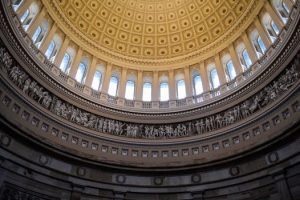The Interest Rate Tightrope: How Mortgage Rates Will Shape 2025.
Welcome to the year 2025, where the economy is in a constant state of flux and mortgage rates are at the center of it all. As we continue to navigate through these uncertain times, one thing is for certain – the interest rate tightrope is a tricky one to walk on. With so much at stake, it’s important to understand how mortgage rates will shape the landscape of the real estate market in the coming years.
The Current State of Mortgage Rates
Before we dive into the future, let’s take a look at where things stand right now. In 2021, mortgage rates hit a record low, with the 30-year fixed-rate hovering around 3%. This drop in rates was largely due to the COVID-19 pandemic and the resulting economic downturn. The Federal Reserve also stepped in to keep rates low in an effort to stimulate the economy and help struggling homeowners.
But as the economy begins to recover, we are seeing mortgage rates slowly start to rise. In fact, as of July 2021, the 30-year fixed-rate has already reached 3.3%. While this is still historically low, the trend is pointing towards a gradual increase in the coming years.
The Impact of Rising Rates on Homebuyers
Affordability
One of the biggest concerns for homebuyers is affordability. As interest rates rise, the cost of borrowing money to purchase a home also increases. This means that potential buyers may have to adjust their budgets and expectations when it comes to finding a home within their price range.
Rising mortgage rates can also make it more difficult for first-time homebuyers to enter the market. With higher interest rates, monthly mortgage payments may become too expensive for those just starting out in their careers and struggling to save for a down payment.
Competition
In a low interest rate environment, homebuyers may face stiff competition as more individuals enter the market. With lower rates, qualifying for a mortgage becomes easier and more affordable, leading to a higher demand for homes. This increases competition and can drive up home prices.
However, as rates continue to rise and affordability decreases, the competition may ease up. Buyers who were previously on the fence may decide to hold off and wait for rates to decrease, leading to a potentially less crowded market.
The Impact of Rising Rates on Homeowners
Refinancing
For homeowners, rising interest rates can have a direct impact on their ability to refinance their mortgage. Many homeowners took advantage of the low rates by refinancing their mortgages to save money on their monthly payments. But with rates on the rise, the possibility of refinancing may become less attractive.
The rule of thumb is that refinancing is only worth it if you can reduce your interest rate by at least 1%. So as rates continue to climb, it may become less beneficial for homeowners to refinance. This means they may miss out on potential savings on their mortgage payments.
Economic Outlook
Rising mortgage rates can also have an impact on the overall economy. As interest rates increase, it becomes more expensive for businesses and individuals to borrow money. This can slow down economic growth and potentially lead to a decrease in consumer spending.
On the other hand, rising interest rates can also indicate a healthier economy. If the Federal Reserve is raising rates due to an improving economy and lower unemployment rates, it can provide stability and confidence in the market.
The Future of Mortgage Rates
So what does all of this mean for the future of mortgage rates? While no one can say for certain what will happen, most experts predict that rates will continue to slowly rise over the next few years. The Federal Reserve has already indicated that they plan to gradually increase rates as the economy improves.
But just how high will rates go? Some predict that by 2025, the 30-year fixed-rate could reach 4.5%, while others believe it could climb as high as 5%. While these may seem like relatively low rates, even a small increase can have a big impact on affordability for homebuyers and refinancing options for homeowners.
Final Thoughts
As we continue to navigate through economic uncertainty, keeping a close eye on mortgage rates is crucial. How they fluctuate over the coming years will play a significant role in shaping the real estate market and the decisions of homebuyers and homeowners alike. While no one knows for sure where rates will go, being well-informed and prepared for potential changes is key to successfully walking the interest rate tightrope.
So here’s to hoping for a steady and stable future for mortgage rates. But in the ever-changing landscape of the economy, one thing is certain – we will continue to be on our toes and ready for whatever comes our way.










